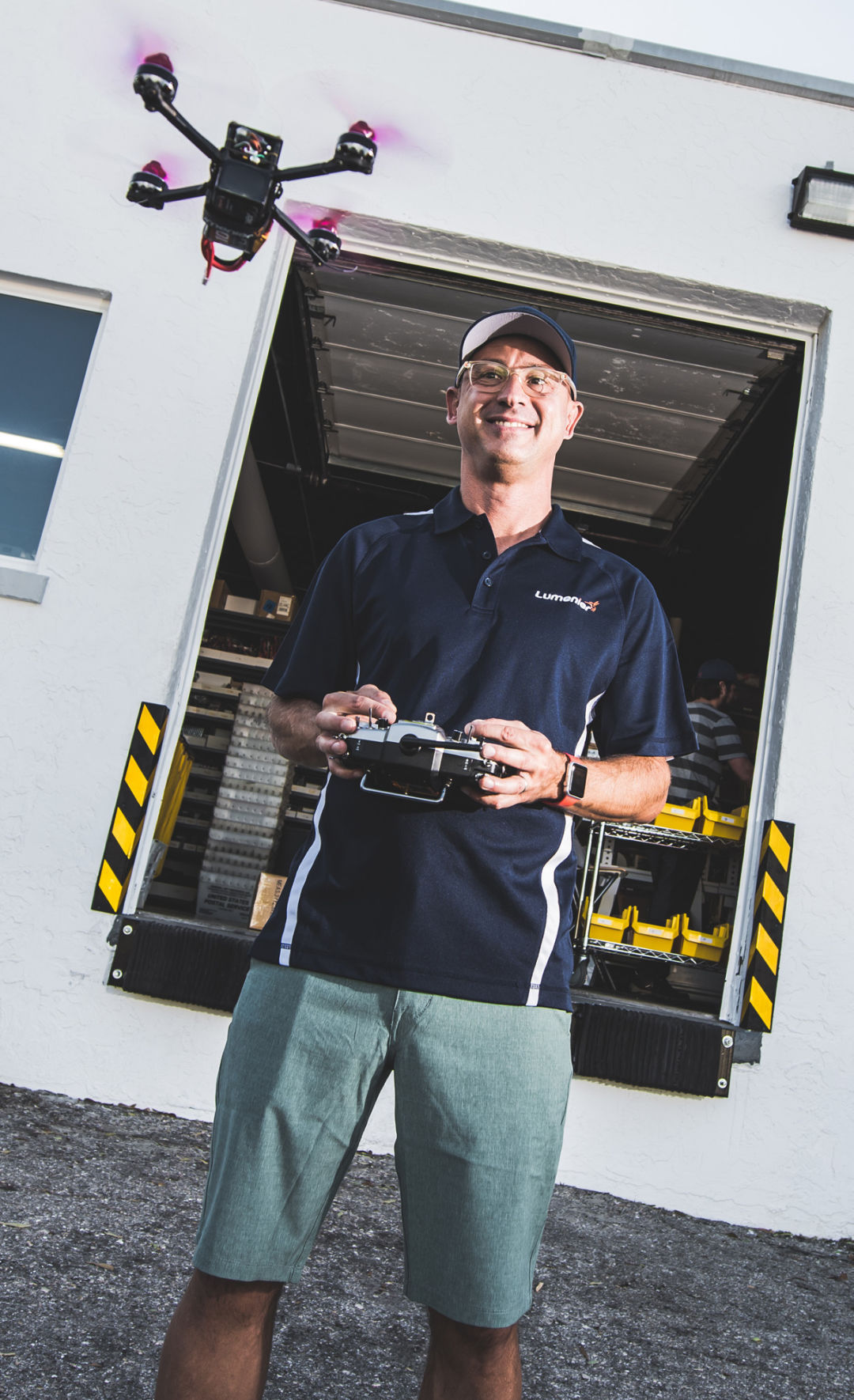Tim Nilson Makes Parts for Drones

Tim Nilson
Image: Everett Dennison
“I first encountered a drone around 2011. Hobbyists had just started sticking cameras on [radio-controlled] planes, looking through the camera while wearing these goggles. It knocked my socks off. But because the camera was always shaking, the picture wasn’t very good. So I started to think of things I would do differently, ways to mount those cameras to remove the vibrations.”
“I was living with my family in Manhattan and working as the chief technology officer for Sony Music when I realized [drone parts manufacturing] could be a real business. I wanted to do it full-time, but New York was too expensive and it’s not a good place to fly anything radio-controlled. I caught a glimpse of Sarasota on a British television show, Wheeler Dealers, and I thought, ‘That looks really beautiful.’”
“We bought a house on Siesta Key, and I thought, ‘I’m just going to work in my garage.’ But it kept growing. I bought a 5,000-square-foot building in downtown Sarasota. We’re now at 25 employees, and we’re about to move into a 24,000-square-foot facility I’ve built just a few blocks away.”
“My company, Lumenier, offers high-performance components for drone racing pilots who build their own air frames and are picking the best parts for their drone. We do all the research and design and prototyping here, then we do mass production in China to stay cost-competitive. Our other company, GetFPV.com, is the largest FPV [first-person video] and drone racing-focused retailer in the U.S. Now we’re starting to target the commercial market, too—companies using drones for delivery, search and rescue, photography, even for farmland analysis.”
“Lumenier sponsors many drone racers—pilots who wear our jerseys and our hats and fly our equipment during competitions. [In] a car race, the track is two-dimensional; a drone race is a three-dimensional course. The pilots are all sitting next to each other, flying through these intricate courses, looking through the video that’s being transmitted from the camera on the drone to their goggles. It’s an adrenaline rush; they’ll even lean their bodies as they’re turning the drone. Drone racing creates more crashes than other kinds of races.”
“I [fly a drone] every day, just because I enjoy it. I love the sense of freedom, to look at the world from a different perspective. From 20 feet up, the world looks different. Even your street you go up and down every day—it’s unrecognizable.”



